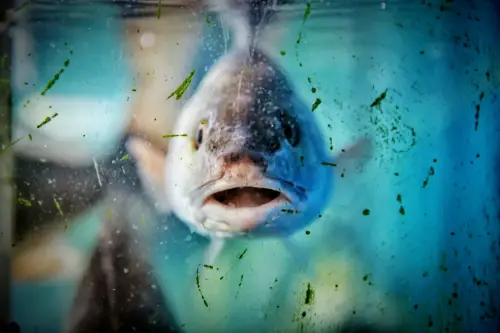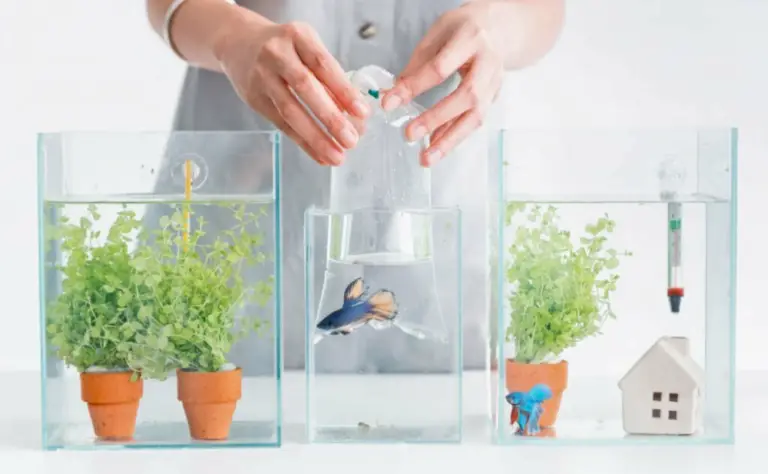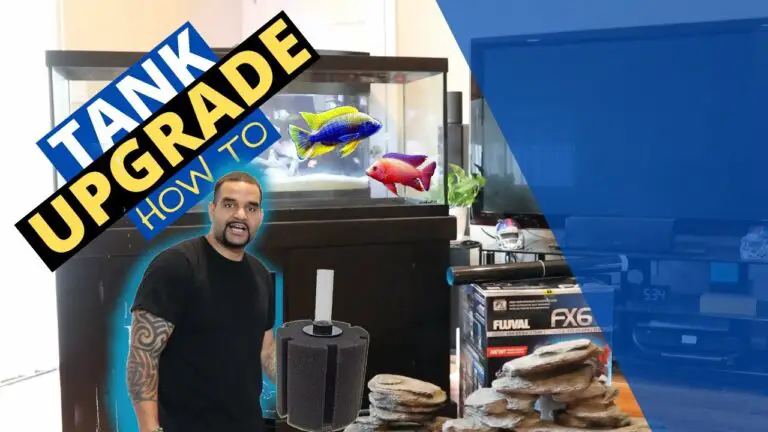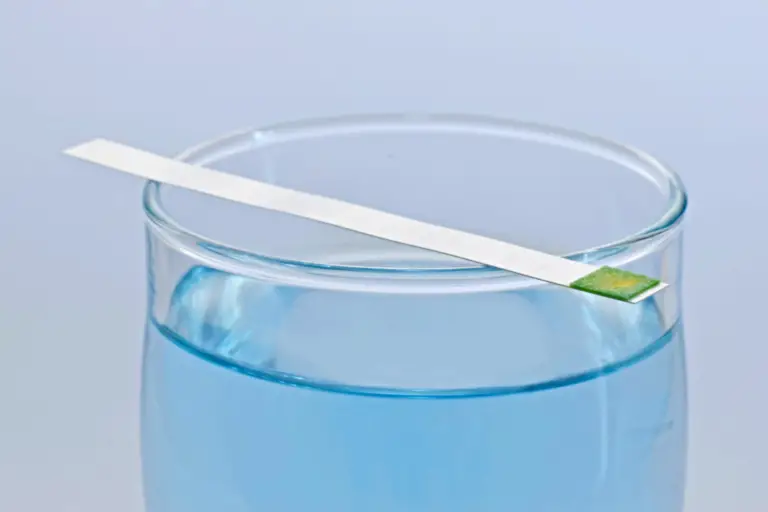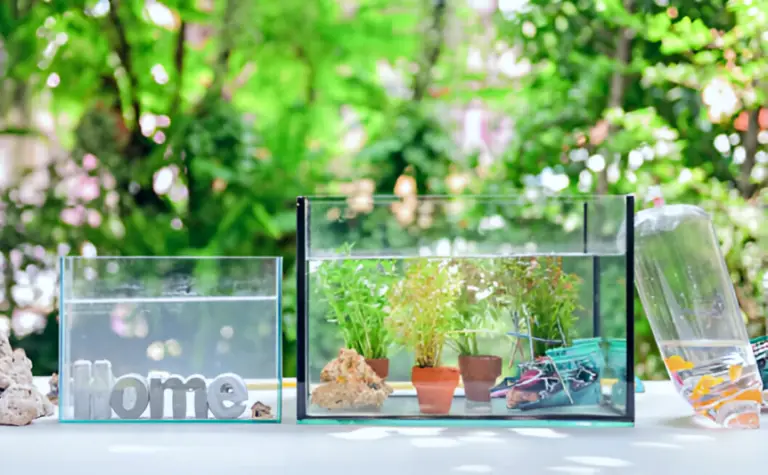8 Most Common Mistakes When Starting Your First Aquarium
Are you looking to start an aquarium? An aquarium is a great way to introduce yourself to the world of fish-keeping and can be a highly rewarding hobby. It can also be a challenge, as there are many questions to consider and potential hazards if not approached properly.
Many beginners make some common mistakes that can lead to frustration, disappointment, and even fish deaths. Here are some of the most common mistakes when starting your first aquarium and how to avoid them.
Mistake #1: Starting with a small aquarium
When it comes to aquariums, many novice aquarists make the mistake of starting with overly small tanks. A small aquarium might seem like it’s easier to maintain and therefore more ideal for beginners, but in reality, it will often be more of a challenge.
For starters, small tanks lack the volume of water needed to effectively maintain stable water parameters. With fewer gallons of water, the slightest chemical imbalance can be disruptive and potentially lethal to any fish that inhabit the tank. On top of that, the limited number of gallons also means that frequent water changes are necessary.
Another disadvantage of a small tank is the limited selection of fish species. Some species of fish can also easily outgrow a small tank, so if you choose a small aquarium, you’ll likely need to find a new home for your fish before they reach their full size.
Overall, the best thing to do when setting up your first aquarium is to choose the right size that best suits your budget, space, and preferences for fish. If you’re new to aquariums, you may want to opt for a tank that’s in the mid-range in terms of size. This way, you won’t have to worry about fish outgrowing the tank or disruptive water parameters.
Mistake #2: Adding fish too soon
It can be tempting to add fish to your newly-set-up aquarium, but adding them too soon can be damaging for both fish and bacteria. An aquarium that is not yet fully cycled is harmful for fish as it does not yet have the beneficial bacteria which help to break down harmful substances in the water, such as ammonia. The presence of these substances in the aquarium can be stressful for the fish, and can cause them to become ill or worse.
To avoid any health issues for your fish, it’s best to wait at least four to six weeks after setting up the tank before introducing any fish. This gives time for the beneficial bacteria colonies to develop, and will help ensure a healthy environment for your fish. During this time, it is important to regularly test the water for ammonia and nitrite levels, and to use an aquarium water conditioner to reduce their presence in the water.
But, there is another method. With advancements in the hobby we now have products that can help with keeping the water safe for fish while the tank is currently cycling. This means you don’t have to wait and can add fish on day 1! This method is done by daily dosing your tank with Seachem Prime and Stability. Here’s a detailed explanation of that process.
Mistake #3: Adding too many fish at once
Overloading your aquarium tank with too many fish can be catastrophic for their health, as this can overload your biological filter and cause ammonia poisoning or oxygen depletion. As a result, the fish can suffer from poor health and could even die.
If you’re wondering how many fish you can add to your tank, then there are a few factors you should consider. This includes the size of your tank, the filtration capacity, the water quality and whether or not the fish are compatible with one another. For example, you can generally add more fish to a larger tank compared to a smaller one.
For the best results, it’s important to start off slow and steady with your new fish tank. It’s a good idea to add only a few fish at a time, and to keep a close eye on their behavior and health. This will help you to better monitor the chemical levels in your tank, and to ensure that your fish are healthy and thriving. In the end, this will help you to have a well-balanced and successful aquarium tank.
Mistake #4: Overstocking the aquarium
It is important to be aware of the right number of fish you should be placing in your tank, so that you don’t make the mistake of overstocking it and thus avoid the problems mentioned above.
One method of determining the right number of fish to keep in your tank is by using online calculators. These calculators are designed to help figure out the optimal number of fish for a given tank size, based on parameters like species, tank length, water temperature, and other factors. The calculators can provide valuable information for novice aquarists who are getting started, as well as for experienced aquarists who are looking to increase their stock levels.
Another way to determine the proper number of fish for your aquarium is to follow the “inch-per-gallon” rule. This is a guideline that suggests one inch of fish per gallon of water. While this can be a useful starting point, it is important to realize that this rule is not always sufficient. For example, some species of fish such as cichlids or schooling fish may require more space than the inch-per-gallon rule allows for. These fish may also require overstocking in order to curb their aggression. Other species might require less space depending on their size and other environmental factors.
Mistake #5: Keeping incompatible fish
If you’re new to keeping fish, you may be tempted to buy several different species for your aquarium, but here’s what you need to know: keeping incompatible fish can result in stress injuries or death for your fish. Different species of fish have different factors that affect how well they get along with each other, such as size, temperament, aggression levels, diet, water requirements, and specialized needs.
To avoid frustration and fish loss down the road, it is important to research each species carefully before buying them. A good starting point is to understand the natural behavior of each fish. For example, some fish require space, while others are fine living in small tanks and can handle being housed with other species. Two species of fish may behave differently in the same tank and this could be a major cause of stress between them.
It is also essential to consider the size of the fish when deciding on tank mates. Generally, larger fish may try to dominate smaller species of fish, so it is best to avoid any tank combination where one fish is significantly larger than the other. To ensure one fish does not have an unfair advantage over the other, the size of the two fish should be roughly the same.
Dietary needs and water requirements may also lead to incompatibility between two species. When two fish have vastly different dietary needs, one species may not be getting sufficient nutrients, resulting in poor health and aggression issues that can lead to an unhealthy tank. Additionally, if two species require different levels of water quality or different water temperature, this could lead to a decrease in the quality of life for both fish.
Mistake #6: Overfeeding your fish
We all want to keep our fish happy and healthy, but it can be easy to overfeed them. One of the most important things if you have fish is to make sure they’re getting the correct portion size and frequency. It’s important to only feed your fish what they can eat within a few minutes once or twice a day, leaving no food left over to rot or accumulate in your tank. Feeding too much food can be particularly detrimental to long-term water quality, as it causes excess waste, allowing nitrates to build up in the aquarium.
When it comes to feeding our fish, it’s essential to pay attention to the recommended portion size and frequency. Overfeeding can lead to serious health problems, poor water quality, and algae growth. To ensure the health and happiness of your fish, make sure to only offer them what they can eat in a few minutes once or twice a day.
Mistake #7: Insufficient filtration
Maintaining the water quality of your aquarium is essential for the health of your fish. Without sufficient filtration, the aquarium’s water will quickly become polluted with waste, causing dangerous levels of ammonia and nitrite, which can cause fish to become ill or die. Insufficient filtration also leads to cloudy water, an increase in algae and organic matter, as well as an increase in nitrogen-containing compounds.
When it comes to filtration, it’s important to understand that there are three types of filtration: mechanical, biological, and chemical. Mechanical filtration involves removing particles and debris from the water through the use of filters and other equipment. Biological filtration refers to the removal of ammonia and nitrite from the water through the use of beneficial bacteria. Chemical filtration is the process of removing toxins and organic compounds from the water by using various substances such as activated charcoal.
In order to achieve proper filtration, it is important to choose a filter that is rated for at least twice the volume of your aquarium. If the filter is too small for the tank, some areas may be left unfiltered or only partially filtered, leaving the fish to contend with toxic pollutants. Additionally, the filter should be cleaned or replaced regularly in order for it to function at its optimal level.
Mistake #8: Not testing the water regularly
Testing the water in your aquarium is an important part of keeping fish healthy and happy. Regular water tests can help ensure that your fish are enjoying the best conditions possible.
When testing the water in your aquarium, you should take into account several important parameters such as pH, ammonia, nitrite, nitrate, and hardness. Having reliable test kits or test strips for your aquarium can help you identify any unbalanced levels of these parameters, allowing you to adjust the water to the desired or acceptable aquarium water parameters.
Any imbalances or discrepancies in these parameters can lead to stress or even harm to your fish, as well as adversely affect the overall health and longevity of the tank. Common signs of water quality problems can include discolored fish and changes in their normal behavior, such as listlessness or poor appetite.
Conclusion
For many people, starting a home aquarium can be an exciting venture. While it is a rewarding hobby to keep, it is important to do the necessary research to ensure your aquarium is healthy.

